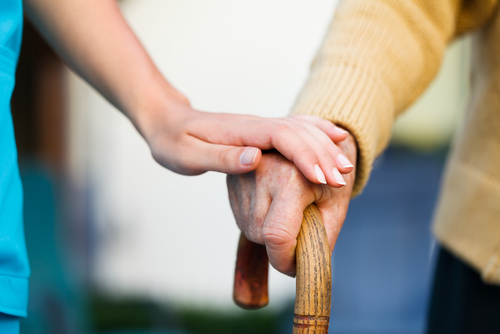Frailty Assessment May Help Identify IPF Patients at Risk, Study Says

Frailty and geriatric conditions, such as incontinence, dizziness, vision impairment, hearing impairment, and falls, are common among older patients with idiopathic pulmonary fibrosis (IPF), a pilot study finds.
Recognition of such commonly associated age-related complications may help identify IPF patients at risk of a poorer outcome, researchers suggest.
The study, “Frailty and geriatric conditions in older patients with idiopathic pulmonary fibrosis,” was published in the journal Respiratory Medicine.
The incidence and prevalence of IPF is known to increase significantly with each decade of life, with about two-thirds of patients being 60 or older at the time of disease onset.
Previous studies have suggested that the relationship between IPF and aging goes beyond being a coincidence — they share common biological mechanisms. Using gene therapy to prevent lung cells from aging has been shown to lessen IPF symptoms and even inhibit fibrosis in mice.
Although IPF mainly affects the lungs, it can also affect the function and activity of other tissues and organs. Patients often have or develop other medical conditions at diagnosis and as the disease progresses.
Researchers at the University of Michigan evaluated the prevalence of clinical frailty and geriatric conditions in 50 patients with IPF, ages 65–86. The majority of these patients had several comorbidities often associated with IPF, including cardiovascular diseases, gastroesophagel reflux disease, COPD, psychiatric conditions, and obstructive sleep apnea.
The Pulmonary Fibrosis News forums are a place to connect with other patients, share tips and talk about the latest research. Check them out today!
The team found that frailty affected about 48% of the patients (24 patients), which represented a prevalence seven times higher than that of the general population age 65 and up (prevalence of 6.9%). Geriatric conditions were also found to be more prevalent in these IPF patients, with 40% reporting two or more geriatric conditions, compared to 19.5% in the general population.
Nine (45%) of the 20 participants who had two or more geriatric conditions were found to be frail, and 15 (50%) of the 30 participants who had one or no geriatric conditions were also frail.
“Although frailty appears to be associated with patient characteristics indicative of more severe disease or a higher number of comorbid conditions, it is also a recognizable parameter in patients with more preserved pulmonary function and less comorbidity,” researchers stated.
Further analysis revealed that more advanced age and oxygen use were associated with 5.6 and 4.9 times higher risk of frailty in IPF patients. Those who had better respiratory function and exercise capacity — as determined by higher diffusion capacity (DLCO), forced expiratory volume (FEV), and forced vital capacity (FVC) — had a reduced risk of frailty.
Frail IPF patients were also found to have more comorbidities and geriatric conditions, and to experience worse functional limitations. They reported increased difficulty performing daily life activities, and more severe fatigue than non-frail IPF patients.
Researchers found that self-reported high fatigue scores and reduced DLCO could independently predict the risk of frailty among IPF patients.
The team believes that “distinguishing frail from fit elderly in an aging population with chronic lung disease such as IPF may enhance risk assessment of a vulnerable population.”
Furthermore, “frailty measures may [help] identify more patients who are likely to benefit from pulmonary rehabilitation,” researchers said. Still, additional studies are needed to explore the implications of frailty in the IPF population, and the impact of pulmonary rehabilitation to improve frailty status.







